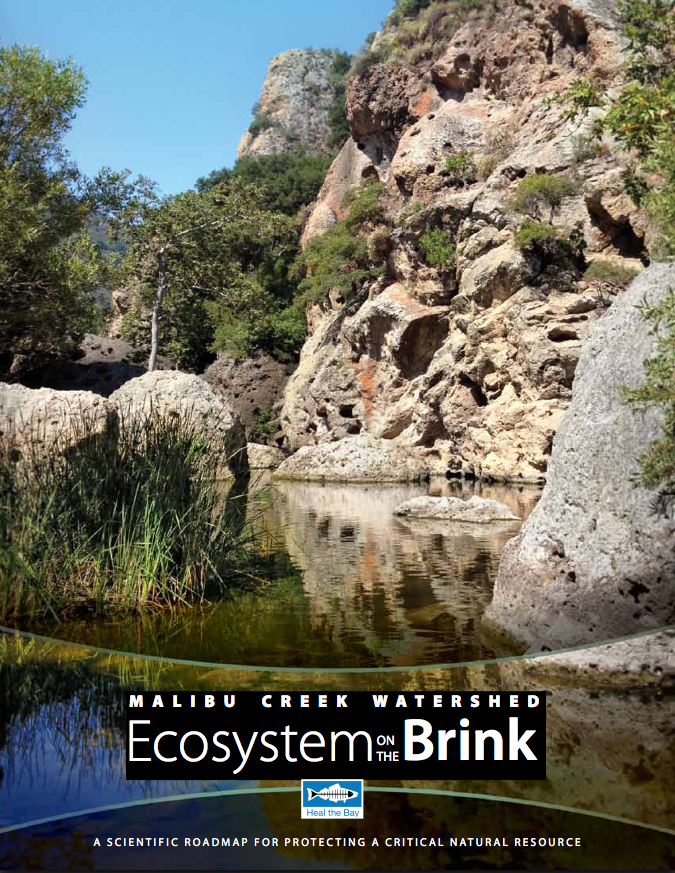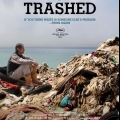Sarah Sikich, Heal the Bay’s director of coastal resources and Dana Roeber Murray, Heal the Bay marine scientist, recently attended a conference in Monterey that examined how well marine protected areas are functioning off California’s coast. Heal the Bay has played a critical role in establishing MPAs in Southern California. Here Sarah shares lessons learned at the symposium.
“Unless someone like you cares a whole awful lot, nothing is going to get better. It’s not.”
As to many conservationists, this quote from Dr. Seuss’ The Lorax has meant a lot to me throughout my life and career. It was inspiring to hear Chuck Bonham, the Director of California Department of Fish and Wildlife, conclude his remarks at the State of the Central Coast MPA Symposium with this quote last Friday. (Maybe he was channeling Theodor Seuss Geisel, as it was Dr. Seuss’ birthday the following day, March 2!)
Spending a few days in Monterey with Dana Murray, Heal the Bay’s Marine and Coastal Scientist, listening to resource managers, policy makers, stakeholders, and scientists reflect on the first five years of marine protected area (MPA) monitoring and management along California’s Central Coast gave me hope for restoring Southern California’s marine resources, with our own MPAs on the South Coast going into effect last year. It was an intense three days in a room with over 350 people, but we both learned a lot about how the Central Coast MPAs (from Pigeon Point to Point Conception) are functioning.
These “lessons learned” may give us insights on other MPAs up and down the coast will perform, as the Central Coast has the first coastal MPA network to be implemented in California.

Here are the top three snapshots that Dana and I took away from the symposium.
1. The early signs are encouraging
The overall trend in marine life growth and abundance is positive! While there is some variation between species and MPAs, many fish, including blue rockfish, lingcod, and cabezon are more abundant inside the MPAs as compared to outside these areas. Research also shows that some species, including black abalone and owl limpets are larger in the MPAs. In one of the oldest underwater parks along California’s coast, Point Lobos (a 40-year old marine reserve), scientists documented more fish and larger fish- and similar results are starting to be seen in some of the newer MPAs. With a robust network of underwater parks throughout the state now in place, hopefully we will start to see similar trends in other locations, including Southern California.
Commercial and recreational fishing and other commercial ventures are also showing improvement. Overall commercial fishing revenue has increased since MPA implementation, and recreational fishermen’s total catch has actually increased. In addition, people are adapting to public demands for recreation– some former fishing boats have moved on to provide non-consumptive ventures such as whale watching.
2. Community-based research helps provide insights
As a group that relies on volunteer engagement and stewardship to reach wide audiences and conduct research, Heal the Bay recognizes great value in citizen science. It was motivating to see how important community-based research and citizen science is in evaluating the Central Coast MPAs. A broad range of groups are involved in these efforts– volunteer SCUBA divers surveying marine life with Reef Check, fishermen working with marine ecologists to assess population trends like the California Collaborative Fisheries Research Program, high school students monitoring tidepools through the LiMPETS program, and volunteers monitoring human uses in MPAs through the Otter Project’s MPA Watch program. These programs offer many benefits beyond data collection – they are cost-effective, build awareness, create community trust and transparency in the research, and promote stewardship among participants. This provides promise for Heal the Bay’s research programs that rely on volunteer scientists, like Stream Team and MPA Watch.
3. People still care about MPAs
It’s no secret that the MPA designation and adoption process was contentious, and a challenge to balance various interests in creating these new underwater parks. So, it was exciting to see the conference room packed with hundreds of people from throughout the state during all three days of the symposium – it is clear that people are eager to learn about the research findings, and there was a general buzz of positivity in the room.
Another sign that people are caring for our MPAs comes from the trends of public calls to Cal-TIP, presented at the symposium by Assistant Chief Bob Farrell of Fish & Wildlife’s Marine Division. Cal-TIP is a confidential call-in line for the public to Fish and Wildlife to report illegal activities of poaching and polluting, in an effort to help protect the state’s biological resources. In 2012, 259 calls came in from the public reporting violations in California’s MPAs via 1 888 DFG-CALTIP (888 334-2258). Public reporting is a form of community stewardship of our oceans, as it helps both our natural resources and Fish and Wildlife’s enforcement efforts. Although education efforts are key to the success of MPAs, reporting violations to Fish and Wildlife is imperative as well- Farrell stated that “poaching activity directly affects the recovery and rebuilding rates of an area.”
People care about these special places, and are working together in creative ways to build “social capital” or awareness and stewardship about these MPAs. I guess this shouldn’t be a surprise, as one of our most popular volunteer programs, MPA Watch, involves monitoring underwater parks in our region.
Another gem from Chuck Bonham closed the symposium- that California has created “an MPA network that rivals none other in the world.” MPA creation in California has been a true collaborative process, which will hopefully provide long-lasting benefits California’s coastal environment and its ocean users.
Find out more about the Central Coast MPAs.
Watch highlights from the State of the California Central Coast symposium on February 28, 2013.
Want to get involved with monitoring and research in Southern California? Sign up for Heal the Bay’s volunteer scientist programs Stream Team and MPA Watch.
— Sarah Sikich, Heal the Bay’s Coastal Resources Director





 one following the migration of rubbish, the tons of waste that goes unaccounted for each year. Irons serves as the film’s chief investigator as well as the executive producer.
one following the migration of rubbish, the tons of waste that goes unaccounted for each year. Irons serves as the film’s chief investigator as well as the executive producer.